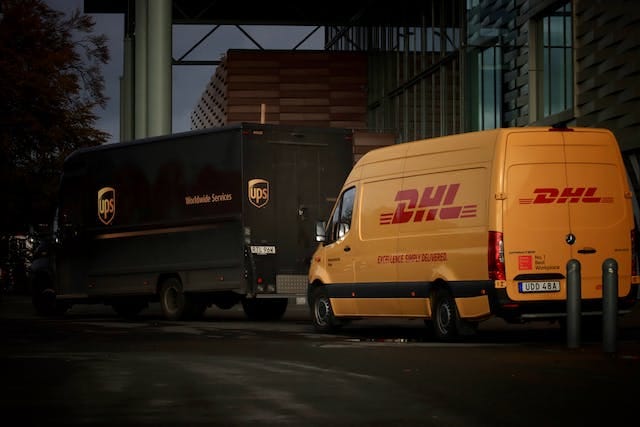Sign from UPS Indicates a Possible Economic Red Flag for the US
Analyze potential economic concerns signaled by UPS—a notable indicator. Explore insights into possible red flags for the US economy, based on UPS data and its broader implications

According to UPS, the U.S. economy has begun to slow down.
In the first quarter, the biggest trucking company in the U.S. announced that its revenue decreased by 6% compared to the same period the preceding year, and its operating profit dropped by 22%. The earnings for the quarter fell slightly short of what analysts on Wall Street had predicted.

The danger of an economic downturn is escalating, as evidenced by this article from CNN.
The company's earnings report indicated that in the first quarter, US retail sales declined and caused volume to fall short of expectations. Moreover, Asia had experienced sustained demand weakness. In view of the present macroeconomic situation, it is anticipated that volume may remain constrained.
In January, UPS' volumes were as predicted; however, the macroeconomic environment deteriorated, leading to a 7% decrease in March's volumes compared to the same month in the prior year. This sharp decline "gave us pause," said Carole Tome, the company's CEO.
The stock price of UPS experienced a 6% decrease in the opening trading session in response to the recent news.
UPS predicted last year that their 2023 profit margin would not be as high as the record one reported in 2022. Recently, they revised that outlook and believe their annual earnings will be at the bottom of that expectation "as a result of the difficult economic situation and modifications in consumer conduct."
Daily, UPS transports goods that represent 6% of the US economy, as measured by the Gross Domestic Product. This number serves as the broadest indication of the nation's financial output.
The US economy has been slowing and UPS is currently in contract negotiations with the Teamsters Union, which is made up of more than 340,000 of its 444,000 US employees. The agreement between the two parties is set to expire on August 1, at which point the union could go on strike.
Tome attempted to paint a hopeful picture with regards to the current labor negotiations, noting that "significant advances" had been made on a variety of points, such as ensuring enough personnel for weekend deliveries and finding ways to reduce the intense heat inside the typically air-conditioner-less UPS delivery vans.
Tome expressed certainty that a beneficial contract for all parties involved can be achieved in the negotiations, and that by the end of July, UPS and the Teamsters will have reached an understanding. He added that, as with any negotiation, there will certainly be some bumps in the road.
Tome stated that UPS has been noticing some packages being sent to other carriers because of worries about a potential strike. She mentioned that it "would be impossible to assume there would be none" but also said that UPS has top-level executives working intently with big customers to assure them about the status of the talks.
However, the Teamsters have not expressed much confidence that a deal can be reached at this time.
Teamsters General President Sean O'Brien recently declared in an announcement that "this is not a game" and urged that UPS must not act like it is. He made this statement earlier this month.
In the past, O'Brien has voiced that the union does not desire to strike, but is willing to do so if it is what is required to obtain the contract that its members desire.
The positive effects that digital technology has had on communication are far-reaching. It has enabled people to stay connected in ways they never could before. From emails and social media sites to messaging apps and video calls, the opportunities for communication are almost limitless. People now have the ability to communicate quickly and easily with anyone, regardless of location. Furthermore, digital technology has also made it possible to share information and collaborate on projects with others in a much more efficient way.




